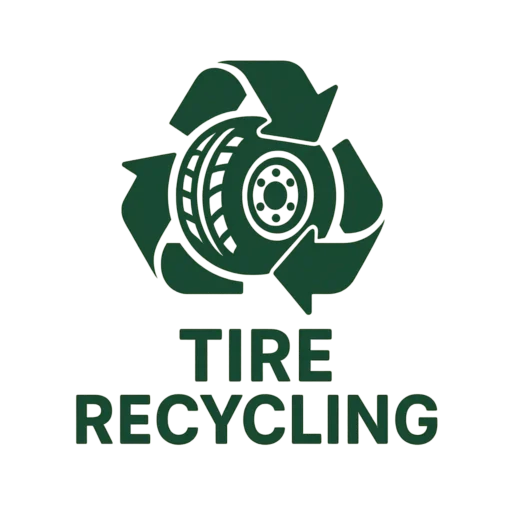In the production of rubber powder, some wastes will be inevitably produced. Inappropriate disposal may pollute the environment. Therefore, we must pay sufficient attention to the disposal of wastes.
Summary: Rubber powder production generates several by-products—textile fiber, steel wire, process dust, noise, and wastewater. With the right line design, each can be controlled or monetized while improving plant uptime and regulatory compliance. This guide explains proven methods and shows how our integrated systems make waste management simpler and more profitable.
Why it matters
End-of-life tires (ELTs) are non-biodegradable and tightly regulated worldwide. Modern recycling lines can turn them into high-value rubber granules and powders while recovering clean steel and managing fiber, dust, and water responsibly. Plants that adopt best-practice waste control typically see higher yield, lower OPEX, and smoother environmental audits.
The main waste and by-products—and what to do with them
1) Textile fiber (fluff)
What it is: Nylon/polyester/aramid fibers from tire cord released during granulation.
Risks if unmanaged: Dust loading, contamination of rubber product, housekeeping issues.
Best practices:
- Air separation + cyclones/baghouses after granulators to pull off light fluff from rubber fractions. Quality lines integrate fiber extraction at multiple stages.
- Secondary fiber cleaning (e.g., density or friction cleaning) to reduce rubber carryover and improve product purity.
Commercial uses: Fiber can be densified for fiber powder/resin fillers, blended into building materials, or processed for energy recovery where permitted. Research and pilot projects also explore re-use in composites and as a reinforcement adjunct.
Our advantage: Our air-knife and multi-stage cyclonic modules typically reduce textile contamination in rubber output to <0.1–0.3% (line-dependent), improving sieve throughput and finished product consistency.
2) Steel wire
What it is: High-tensile bead/belt steel—~10–20% of tire mass depending on construction.
Opportunity: Clean, compacted steel fetches attractive scrap value; dirty steel depresses price and clogs conveyors.
Best practices:
- Magnetic circuits tuned for different stages (over-belt magnets, magnetic drums) to liberate and recover clean steel.
- Liberation via dedicated wire liberators/friction systems to dislodge embedded filaments and reduce rubber contamination on the steel stream.
Downstream markets: Scrap re-melting, and in some cases recycled steel fibers for concrete and precast products.
Our advantage: We pair staged magnets with a high-inertia liberator and an auto-baler so you ship mill-ready steel bundles—not loose, contaminated wire.
3) Dust and particulate (air emissions)
Where it comes from: Cutting, granulation, cracker milling, and pneumatic conveying.
Why it matters: Fugitive dust affects worker health and can trigger citations; it also signals yield loss.
Best practices:
- Source capture at each mill and transfer point, routed to baghouse filtration with return-to-process fines handling—protects air quality and recovers saleable powder.
- Enclosures & negative-pressure zones around high-energy mills to limit fugitive emissions.
- Housekeeping: easy-clean floor trays, sealed ducting, differential-pressure monitoring.
Our advantage: Our plug-and-play dust modules (pre-separator + baghouse) are sized to mill CFM and include bin-level sensors to prevent dust re-entrainment. Many plants see measurable yield gains once fines are properly recovered.
4) Process water and wastewater
Where it’s used: Blade/shaft cooling, wet cleaning, and certain wet separation steps.
Best practices:
- Closed-loop cooling with plate heat exchangers and buffer tanks to minimize make-up water.
- Retrait primaire des solides (sédimentation/filtration) avant recyclage vers les lavandières.
- Contrôle du pH et traps à huile et à sable où requis par les permis locaux.
- Réutilisation en premier : Lorsque le lavage du caoutchouc est purement physique, l'eau clarifiée peut être recyclée dans l'étape de lavage.
Notre avantage : Nous fournissons des ensembles de recyclage d'eau avec dosage automatique et surveillance de la turbidité, conçus pour respecter les limites de rejet communes ou éliminer complètement les rejets où cela est possible.
5) Bruit
Sources : Déchiqueteuses primaires, granulateurs, concasseurs, souffleurs de matériaux.
Meilleures pratiques : Enclos acoustiques, montages d'isolement, silencieux de souffleur, et optimisation de l'agencement pour maintenir les zones d'opérateurs sous les niveaux dB cibles.
Notre avantage : Nous fournissons des kits d'enclos et un soutien à l'agencement pour que la conformité soit planifiée et non rétrofitée.
Conception de la ligne pour pureté, rendement et conformité
Une usine de poudre de caoutchouc robuste combine généralement :
- Primary shredding & debeading
- Granulation / cracking with staged screening
- Steel liberation + magnetic recovery
- Air classification for textile extraction
- Dust collection and fines recovery throughout
- Water recirculation (if wet processes are used)
What you gain when you choose us
- Cleaner outputs, higher revenue: Our separation train consistently delivers low-contam rubber, bale-ready steel, and compacted fiber—reducing rework and raising sales value.
- Lower OPEX by design: Closed-loop water, right-sized dust collection, and automation minimize consumables and downtime.
- Compliance built-in: We align layout and documentation with current ELT management best practices from global industry initiatives—making permitting and audits easier.
- Lifecycle support: Commissioning, operator training, spare parts, and continuous optimization.
Frequently asked questions
How do you separate steel from rubber efficiently?
Use staged size-reduction to liberate steel, then pair over-belt magnets and drum magnets with a wire liberator or friction separator to remove embedded filaments. Result: cleaner steel and rubber with less cross-contamination.
Can wastewater be reused in rubber cleaning?
Yes—where cleaning is a physical process, clarified water can be reused after simple treatment (settling/filtration), reducing discharge and fresh water demand.
What can we do with textile fiber?
Options include densified fiber fillers, composite/binder applications, and energy recovery if compliant. Research shows feasibility of re-use routes tied to the original tire cord properties.
What purity levels can a modern crumb/powder line achieve?
With integrated magnets, air separation, and dust control, plants routinely meet strict textile/steel specs demanded by paving, molded goods, and sports surface buyers.

